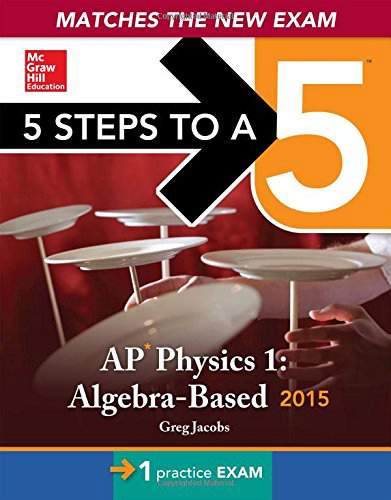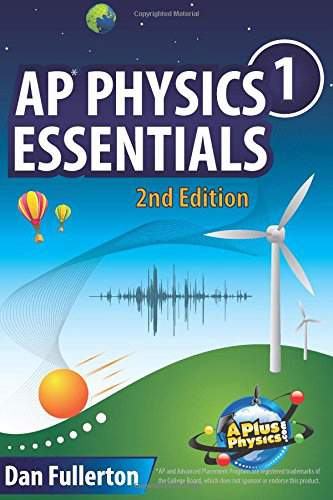Connecting...

This is a quick preview of the lesson. For full access, please Log In or Sign up.
For more information, please see full course syllabus of AP Physics 1 & 2
For more information, please see full course syllabus of AP Physics 1 & 2
AP Physics 1 & 2 Simple Harmonic Motion
Lecture Description
Simple harmonic motion (SHM) is the motion a spring follows. It’s an oscillatory motion with a graph that resembles a sine curve. SHM has tons of implications in more advanced topics of physics but for now just understand the basics. It’s best to think of SHM as another form of motion, much like rotational dynamics and linear movement. You’ll use these SHM equations for any circumstance where you have an oscillating body (most of the time denoted by a mass-on-a-spring problem). It’s important to note when you can use these equations as well as what they are. With this topic we’ve covered all of mechanics and will move onto fluids.
Bookmark & Share
Embed
Share this knowledge with your friends!
Copy & Paste this embed code into your website’s HTML
Please ensure that your website editor is in text mode when you paste the code.(In Wordpress, the mode button is on the top right corner.)
×
Since this lesson is not free, only the preview will appear on your website.
- - Allow users to view the embedded video in full-size.
Next Lecture
Previous Lecture










































 Answer Engine
Answer Engine


1 answer
Fri Mar 20, 2020 5:45 PM
Post by Yeeloo on March 20, 2020
Hi! For the graph of the velocity, A is max, and B,C is 0. Therefore, why would the graph be going in the negative area (under x axis)? Shouldn't it look like the graph for k?
3 answers
Last reply by: Xianxin Zhou
Thu Mar 5, 2020 8:18 PM
Post by Xianxin Zhou on March 5, 2020
When you graphed the Kinetic and Potential Spring energy (in the diagram section), shouldn't it look like more like a sinusoid instead of connected arcs?
1 answer
Sun Jan 8, 2017 11:32 AM
Post by Khalid Khan on January 8, 2017
Why do we not use kinetic energy when we calculate total energy in example 2?
1 answer
Sun Jan 8, 2017 11:20 AM
Post by Khalid Khan on January 8, 2017
Can you please explain where you got pi and the square root of m/k for the period and frequency formulas? We're learning this in class, and we haven't gotten to these formulas yet, so I am just curious.
1 answer
Thu Jun 30, 2016 9:22 AM
Post by Peter Ke on June 29, 2016
For example 6, when you say equilibrium position do you mean by when the pendulum faces directly down. If so doesn't it mean that the KE = maximum while PE = 0, so v=sqrt(2gh) does not apply? I think I am confuse please explain.
Thank you!
3 answers
Sat Apr 30, 2016 12:49 PM
Post by Shikha Bansal on April 29, 2016
For example 2b)the total energy was equal to the spring potential energy only, but for 2d) it was equal to the spring potential and the kinetic energy. Is it because .5 meters is the max it can go (since velocity is zero there)? If so, how did you know ,5 m is the maximum displacement?
Also, for 2c) wasn't the 5 Joules of total energy for the situation where the displacement was .5 meters? How come you used it when the displacement was 0 meters (aka equilibrium position)?
Furthermore, for 2c) I get that the kinetic energy is max at the equilibrium position, but shouldn't the spring potential energy equal 0? So why did u write that kinetic energy was equal to the spring potential energy?
Thanks for all the help!
1 answer
Thu Mar 31, 2016 3:38 PM
Post by Zhe Tian on March 28, 2016
Just a technical question but are angular velocity and angular frequency the same?
4 answers
Tue Aug 11, 2015 8:54 PM
Post by Anh Dang on August 10, 2015
In Circular Motion vs SHM, I don't get why you use sin for the equilibrium position and cosine for the max displacement. Also, why do you use the y coordinates for sin and not x?
2 answers
Last reply by: Jason Wilson
Tue Dec 9, 2014 5:32 PM
Post by Jason Wilson on December 6, 2014
Example 3: I may be simply typing incorrectly on the calculator or possibly missing an entire step. The inverse cos -1(.1/.2) all over 2pi: is coming back on my calc as 60/6.28 = 9.55 what am I missing...I am tired I am cramming right now. :)
3 answers
Sat Aug 30, 2014 8:39 PM
Post by Jungle Jones on August 30, 2014
In example 2, Hooke's Law says that F=-kx, but you just used F=kx to find the spring constant. I understood that the negative sign symbolizes that it is a restoring force, but can you explain why you didn't use the negative sign here?
And do never use the negative sign when doing calculations involving the law?
1 answer
Sat Aug 30, 2014 8:38 PM
Post by Jungle Jones on August 30, 2014
In example 1, I did omega = sqrt(k/m) and got 20, but I got the units of 1/(s^2).
k = 2000 N/m
m = 5 kg
N = kg m/(s^2)
so N/m -> kg/(s^2)
and that divided by 5 kg becomes 1/(s^2)
But it should be just 1/s, so what did I do wrong?
4 answers
Tue Jul 15, 2014 2:40 PM
Post by Jamal Tischler on July 15, 2014
I tried to calculate the spring oscilation period. I used the conservation of energy and kinematics equations for the average acceleration. 1/2kA^2=1/2mv^2 =>v^2=kA^2/m.
v^2=2aA+v0^2=2aA =>kA^2/m=2aA => a= kA/2m.
v=a*t. sqrt(kA^2/m)=kA/2m*t => t= 2 sqrt(m/k). This only the motion from the amplitude to the x=0 position. The farward 3 parts are the same because the kinetic energy is constantly transformed into elastic potential.
T=4*t=8 sqrt(m/k)
The formula said T=2*pi sqrt(m/k). pi doesnt equal 4.
Can you please explain this better ?
1 answer
Thu Mar 13, 2014 9:59 AM
Post by Lin Jiang on March 13, 2014
For example 5, why we needn't to find the equilibrium position. 1/2KX^2, I think x should be how far it pull from equilibrium.
0 answers
Post by Professor Dan Fullerton on February 17, 2014
I use an energy analysis, realizing that at the extremes, the kinetic energy is zero (for an instant the block is still), and all its energy is potential. So the potential energy in a spring is 0.5kx^2. When it's at equilibrium, however, there is no stretch in the spring, so PEs=0, and all the energy must be kinetic due to conservation of energy. So 0.5kx^2=0.5mv^2. Solve for the velocity!
0 answers
Post by sadia mussa on February 17, 2014
how do you get the formula for speed at equilibrium position as well as finding the last question for speed in the example for harmonic oscillator analysis because I don't seem to quite understand it, thanks
1 answer
Mon Dec 9, 2013 9:12 AM
Post by Constance Kang on December 9, 2013
in example 1, since w= rot(m/k) then if i do rot (5/2000) instead of 2pi f, how come i got a different answer ?
3 answers
Tue Apr 30, 2013 7:24 AM
Post by Saki Amagai on April 29, 2013
For example 6, it says "find the tension in the string at the equilibrium position". I think that the net force must equal zero at the equilibrium position; since in the previous slides, it mentioned that force and acceleration all equal zero at the point... Shouldn't "T = mg" and not "T - mg = mv^2/r"?